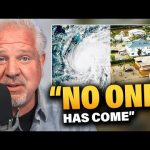Chaos erupted in Evanston, Illinois, when a sedan struck the rear of a U.S. Border Patrol vehicle and a crowd quickly surrounded federal agents who were making arrests. Videos of the scene spread across social media, showing an already tense situation turn chaotic as onlookers surged toward agents and multiple arrests took place. This was not a peaceful town-hall debate — it was a confrontation that could have gone far worse if officers hadn’t acted to control it.
The footage that circulated shows agents using pepper spray, drawing weapons, and at least one agent delivering strikes while a man was pinned on the ground — images that inflamed neighborhood outrage and national attention. Local witnesses dispute parts of the federal account, and the visual evidence has prompted the city to collect footage and forward it to the state’s civil rights investigators. For conservatives who believe in law and order, the video is uncomfortable; it demands a clear-eyed look at what happened, not reflexive virtue signaling.
The Department of Homeland Security has defended its agents, saying they were aggressively tailgated and that an individual assaulted an agent during the scuffle, prompting defensive actions. Federal officials say a hostile crowd surrounded the vehicle and that one detainee allegedly grabbed an agent in a sensitive area while being restrained, which they claim led to the agent’s response. Whether you accept the federal version or the witnesses’ rebuttals, the key fact is that law enforcement was working in an openly hostile environment created by years of permissive local policies.
Meanwhile, Evanston’s leaders have loudly condemned the agents and doubled down on sanctuary-style protections, calling for limits on federal immigration activity and deploying city supervisors to monitor any enforcement action. Local officials have framed the incident as an example of federal overreach, yet their own policies have been an open invitation for these confrontations by declaring “No ICE Zones” and discouraging cooperation with federal authorities. The result is predictable: federal officers do their duty in a community that treats them as an occupying force, and chaos follows.
Let’s be clear: protecting lawful borders and enforcing immigration laws are core functions of the federal government, not optional theater for local politicians looking to score left-wing points. The real lesson here is not to kneecap Border Patrol agents for doing their jobs under pressure, nor is it to excuse people who obstruct arrests and create danger for bystanders. If Evanston wants to be safe, it should stop incentivizing lawlessness and stop giving a platform to agitators who think interference is a civic virtue.
Americans should demand two things at once: a full, transparent investigation into the conduct of any agent who used excessive force, and equally vigorous enforcement against anyone who interfered with those officers or assaulted them. Accountability must run both ways — officers must be held to the law, and protesters who obstruct federal duties must face consequences. A nation that tolerates violence against law enforcement in the name of sanctuary politics is a nation that has lost its way.
This episode is a warning to other blue-run enclaves that treat law enforcement as the enemy: your policies have real consequences for public safety and civic order. Hardworking Americans want secure neighborhoods, functioning sovereign borders, and respect for the rule of law — not performative politics and street-level chaos. Voters should remember which leaders protect communities and which leaders protect chaos when they go to the ballot box.




